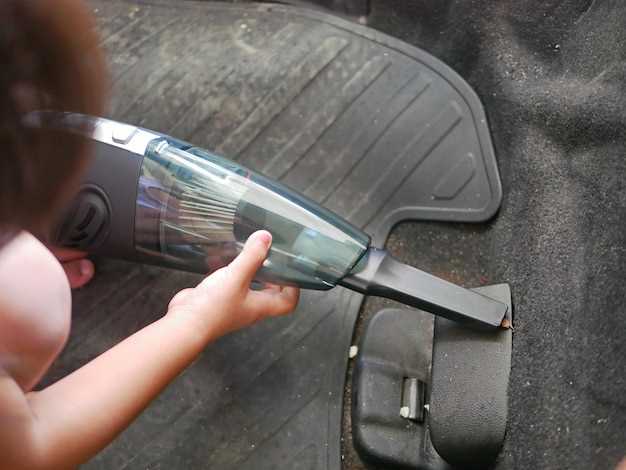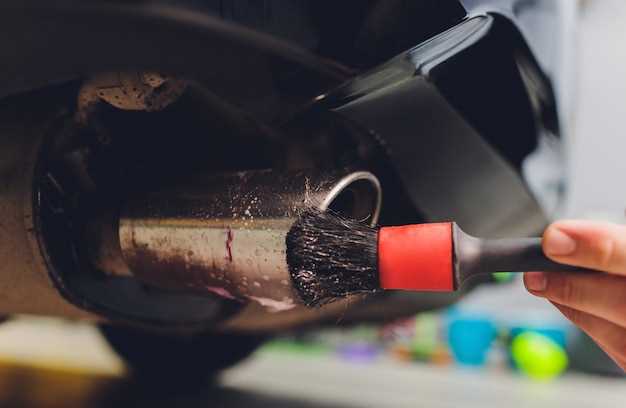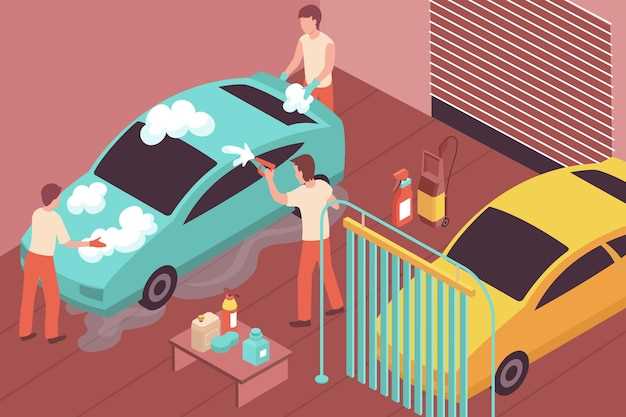
The undercarriage of your vehicle plays a crucial role in its overall performance and longevity. This often-overlooked area is subjected to harsh conditions, including exposure to road salt, mud, and debris, which can lead to corrosion and damage over time. Understanding the importance of cleaning and protecting this part of your vehicle is essential for maintaining its integrity and ensuring safe driving conditions.
Regular maintenance of your vehicle’s undercarriage not only enhances its appearance but also prevents potential issues that can arise from accumulated grime and rust. Failure to address these concerns can lead to costly repairs and decreased resale value. Therefore, implementing a routine cleaning and protection regimen is vital for every vehicle owner.
In this article, we will explore effective techniques for cleaning your vehicle’s undercarriage and provide insights on various protective measures that can prolong its lifespan. By adopting these practices, you can ensure that your vehicle remains in peak condition, providing you with a safe and reliable driving experience.
Step-by-Step Guide to Thoroughly Clean Your Vehicle’s Undercarriage

Cleaning your vehicle’s undercarriage is essential to prevent rust and corrosion, especially if you live in areas where roads are salted during winter. Follow this step-by-step guide for a thorough cleaning.
Step 1: Gather Materials
Before starting, collect all necessary materials. You will need a pressure washer or hose with a nozzle, a stiff-bristle brush, automotive degreaser, a bucket, water, and protective gear such as gloves and goggles.
Step 2: Prepare the Area
Park your vehicle on a flat, level surface and ensure there is adequate drainage. Avoid cleaning near sensitive plants, as the chemicals may harm them. Cover any sensitive components with plastic to protect them from water and debris.
Step 3: Apply Degreaser
Using the automotive degreaser, spray generously on the undercarriage, focusing on areas with heavy grime and build-up. Allow the degreaser to sit for 10-15 minutes to penetrate the dirt.
Step 4: Scrub the Undercarriage
After the degreaser has had time to work, use the stiff-bristle brush to scrub the undercarriage thoroughly. Pay special attention to suspension components, wheel wells, and areas where dirt tends to accumulate. This step may require elbow grease to remove stubborn spots.
Step 5: Rinse Thoroughly
Using a pressure washer or hose with a nozzle, rinse the undercarriage thoroughly. Start from the top and work your way down to ensure all dirt and degreaser are washed away. Ensure all nooks and crannies are rinsed to prevent residue buildup.
Step 6: Dry the Undercarriage
Using a clean microfiber towel, dry the undercarriage as much as possible. Proper drying helps reduce the chance of rust formation. You may also allow your vehicle to air dry for a few minutes before continuing.
Step 7: Apply Rust Protection
Once the undercarriage is clean and dry, consider applying a rust inhibitor or protective coating. This step enhances protection against moisture and salt exposure, critical for longevity.
Step 8: Regular Maintenance
To keep the undercarriage in optimal condition, perform this cleaning process regularly, ideally every three to six months. This routine helps maintain the integrity of your vehicle and reduces the risk of long-term damage.
Best Products for Rust Prevention on Undercarriage
Maintaining your vehicle’s undercarriage is crucial for longevity and performance, and choosing the right products for rust prevention can make all the difference. Here are some of the top products available on the market that effectively protect your vehicle from rust.
1. Rust-Oleum Undercoating Spray – This rust prevention spray offers an easy application process and forms a protective barrier that repels water and salt. Its durable formula dries quickly and stays flexible, ensuring it can withstand the harshest conditions.
2. POR-15 Rust Preventive Coating – Renowned for its exceptional protective qualities, POR-15 bonds to metal and forms a hard, non-porous layer. It is resistant to chipping, cracking, and peeling, making it ideal for the undercarriage where abrasion and moisture are common.
3. Fluid Film – A popular choice among car enthusiasts, Fluid Film is a lanolin-based rust inhibitor that seeps into crevices and forms a dense, slippery coating to keep moisture at bay. Its non-drying properties allow it to provide long-lasting protection without hardening.
4. Eastwood Rust Encapsulator – This product is designed to chemically convert rust into a stable surface that can be painted over. Its ability to bond to existing rust makes it an excellent choice for vehicles with minimal corrosion.
5. 3M Rubberized Undercoating – For those seeking a textured finish, 3M’s rubberized undercoating provides sound dampening and protects against moisture and corrosion. It is easy to apply and remains flexible, helping to reduce road noise.
6. ACF-50 Anti-Corrosion Formula – Originally designed for aircraft, ACF-50 is exceptionally effective for protecting vehicles from rust. Its unique formulation displaces moisture and leaves a protective film that inhibits corrosion even in harsh environments.
Using these products regularly can significantly enhance the lifespan of your vehicle’s undercarriage and prevent costly repairs in the future. Proper application and maintenance will ensure long-lasting protection against rust and deterioration.
Signs That Indicate Your Undercarriage Needs Immediate Attention

The undercarriage of your vehicle is crucial for overall performance and safety. Regular inspections are essential to identify any signs that indicate your undercarriage needs immediate attention. Here are several key warning signs to watch for:
1. Excessive Rust or Corrosion: Visible rust or corrosion on critical components, such as the frame, suspension, or exhaust system, suggests that the protective coatings have deteriorated. This can weaken structural integrity and lead to further damage if not addressed promptly.
2. Unusual Noises: Clunking, rattling, or grinding sounds while driving can indicate loose or damaged undercarriage parts. These noises may be a sign of worn-out bushings, damaged shocks, or a failing exhaust system.
3. Fluid Leaks: Spotting fluid leaks underneath your vehicle can be alarming. Oil, transmission fluid, or brake fluid leaking from the undercarriage might signify a serious issue. Identifying the source and seeking professional help is crucial to prevent further damage.
4. Vibrations While Driving: Experiencing abnormal vibrations or shaking while driving can indicate problems with the suspension system or drivetrain. These vibrations often stem from misalignment or worn-out components that need immediate attention.
5. Suspension Issues: If you notice a decrease in ride comfort, such as excessive bouncing, leaning while turning, or a sagging appearance, it may indicate suspension problems. Inspecting and repairing the undercarriage can help restore the vehicle’s stability and safety.
6. Tires Uneven Wear: Uneven tire wear can be attributed to alignment issues often caused by problems in the undercarriage. Poor alignment may lead to further wear and tear on tires, increasing the need for replacement and impacting overall safety.
7. Warning Lights: Dashboard warning lights related to the vehicle’s stability control or suspension systems should never be ignored. These alerts often indicate an underlying issue with the undercarriage that requires immediate assessment and repairs.
Timely attention to these signs can prevent costly repairs and ensure the safety and longevity of your vehicle. Regular maintenance and inspections form the backbone of a healthy undercarriage, keeping your car performing optimally on the road.

